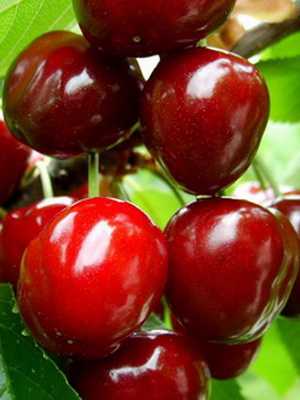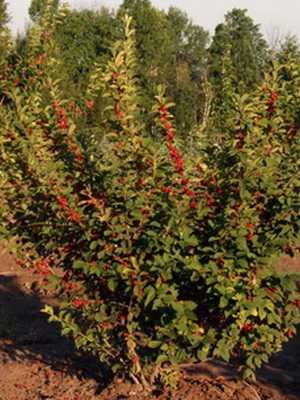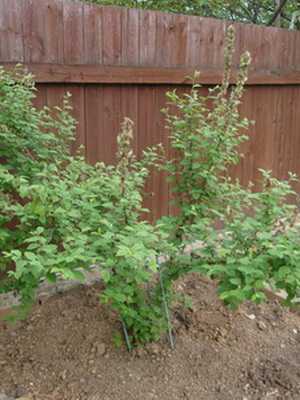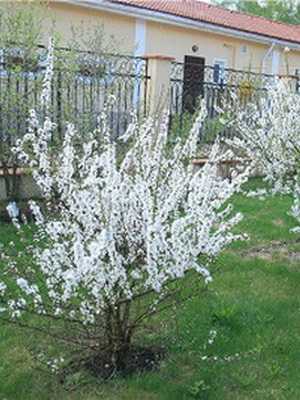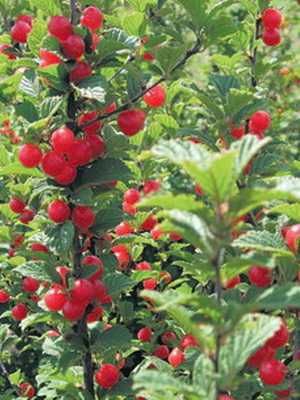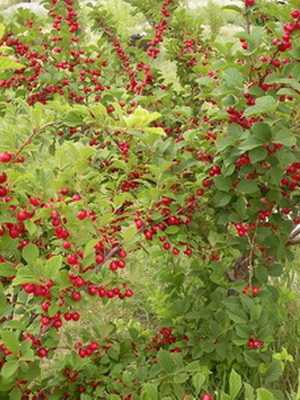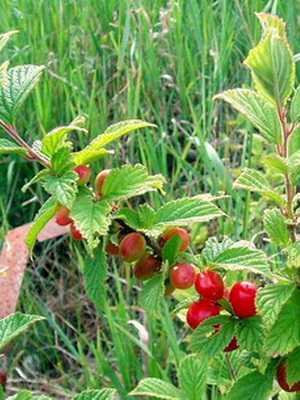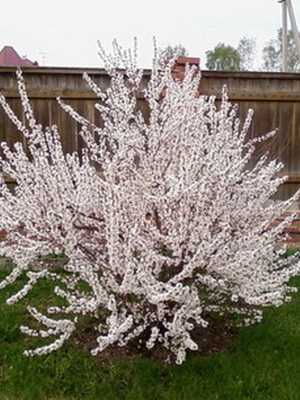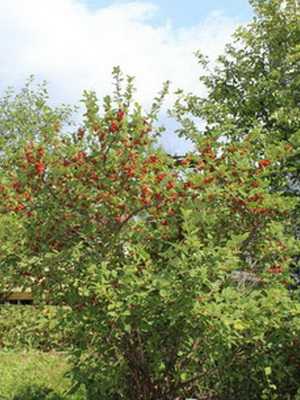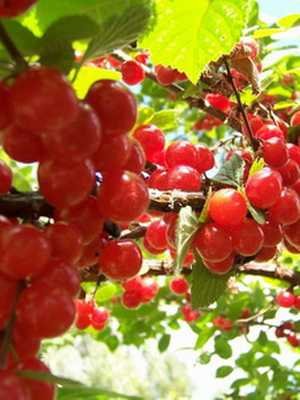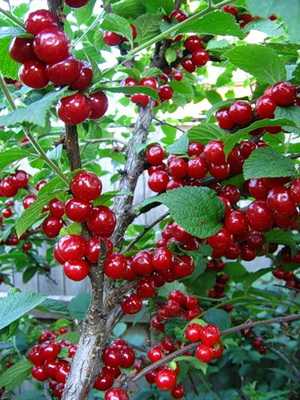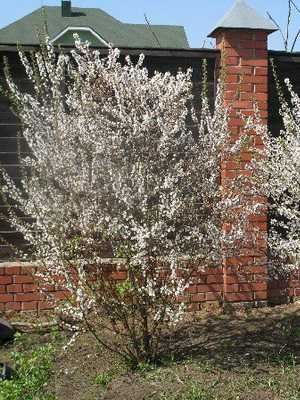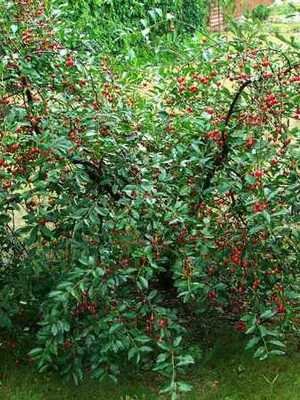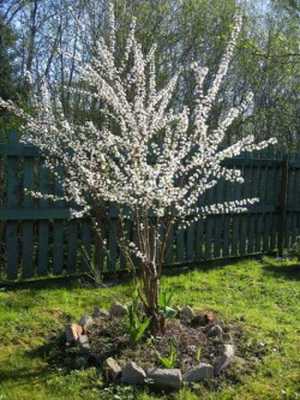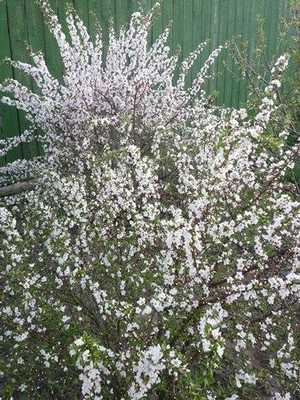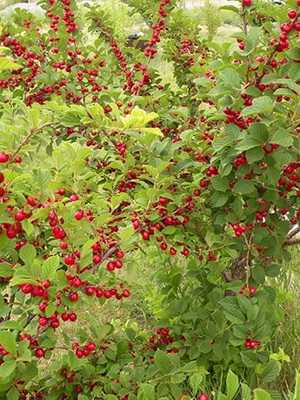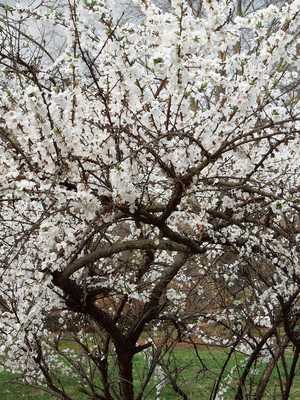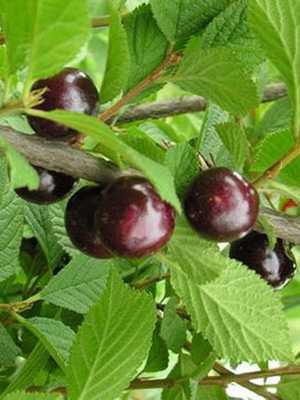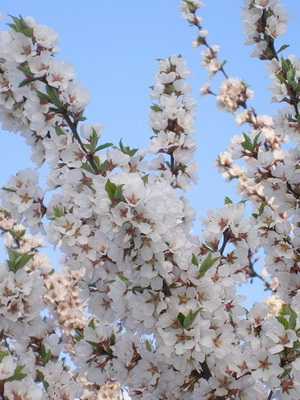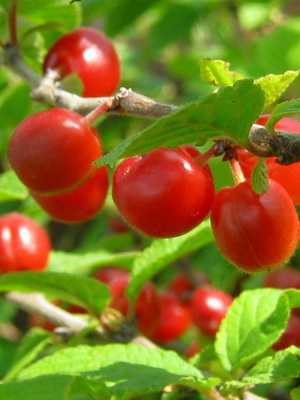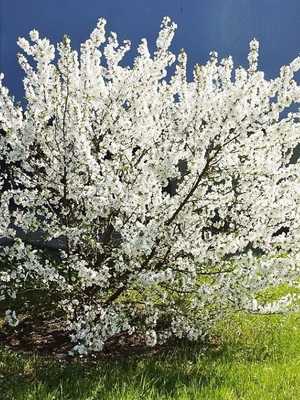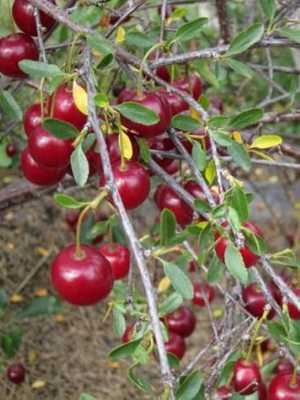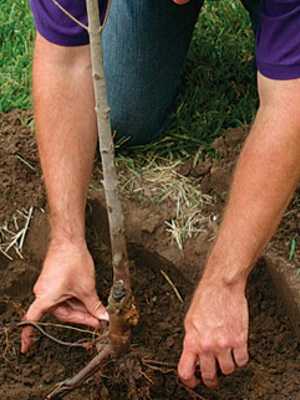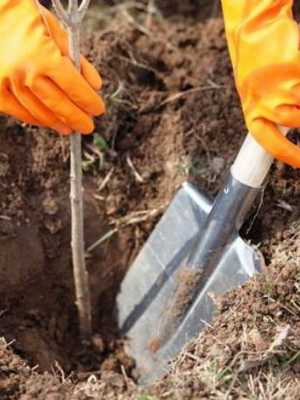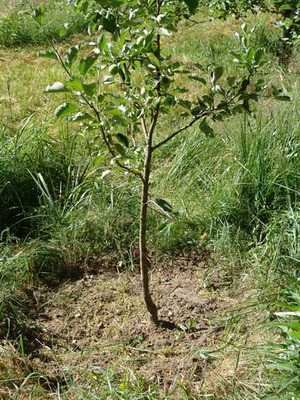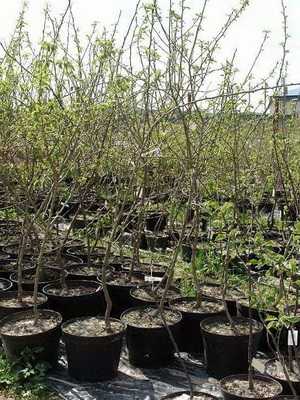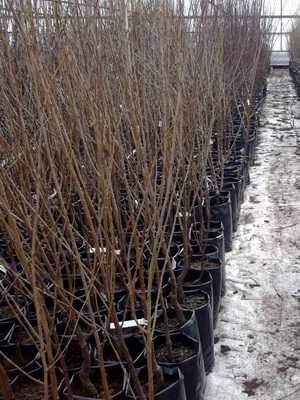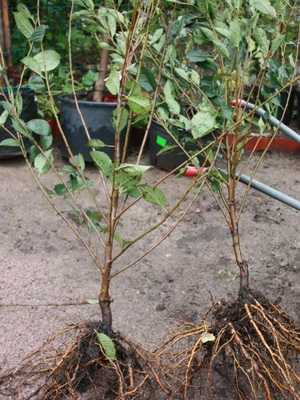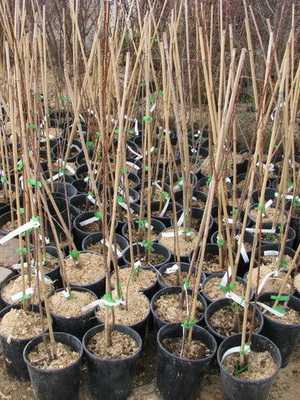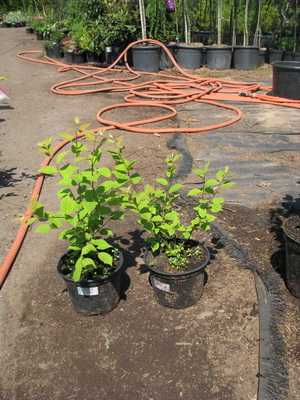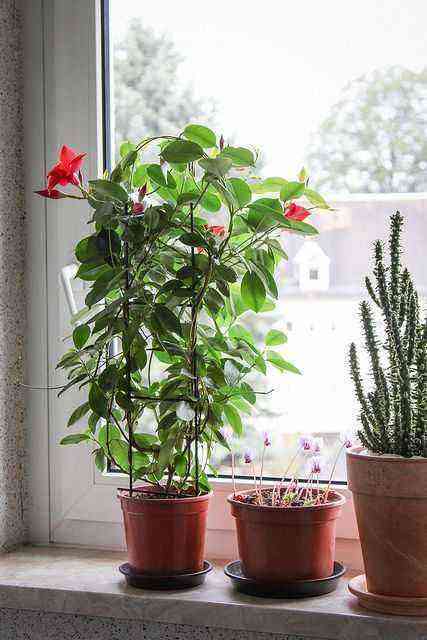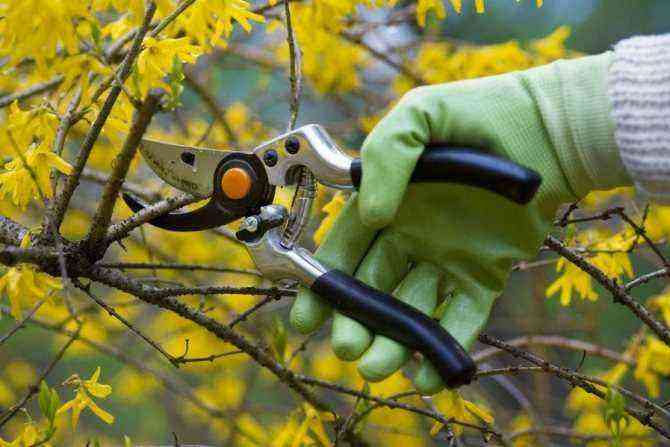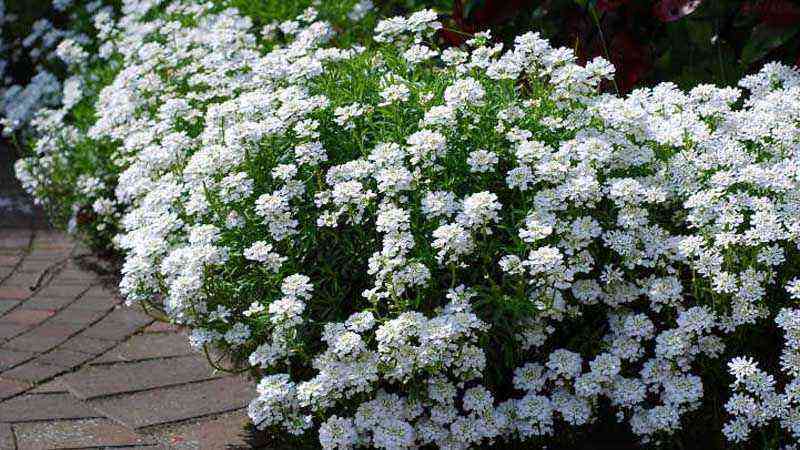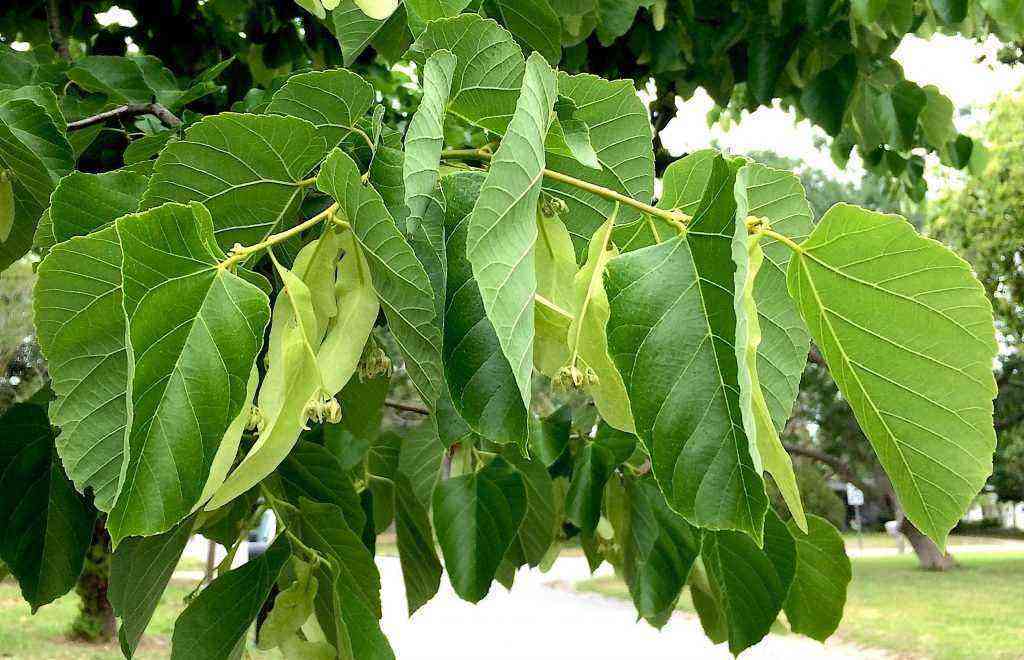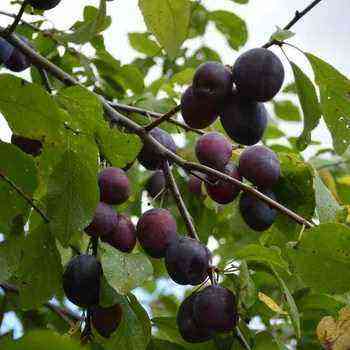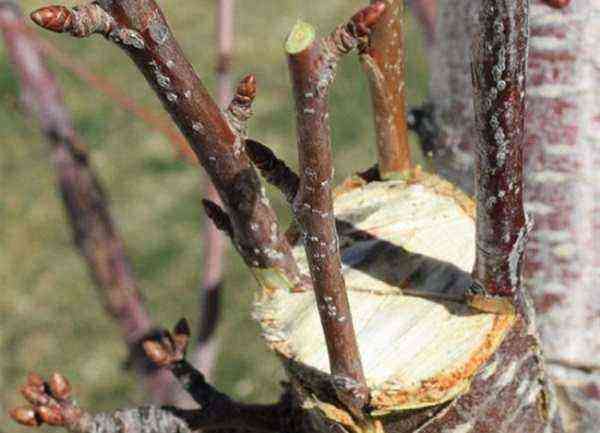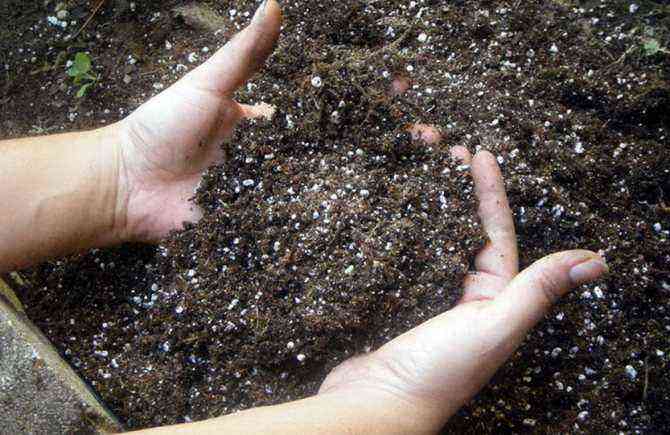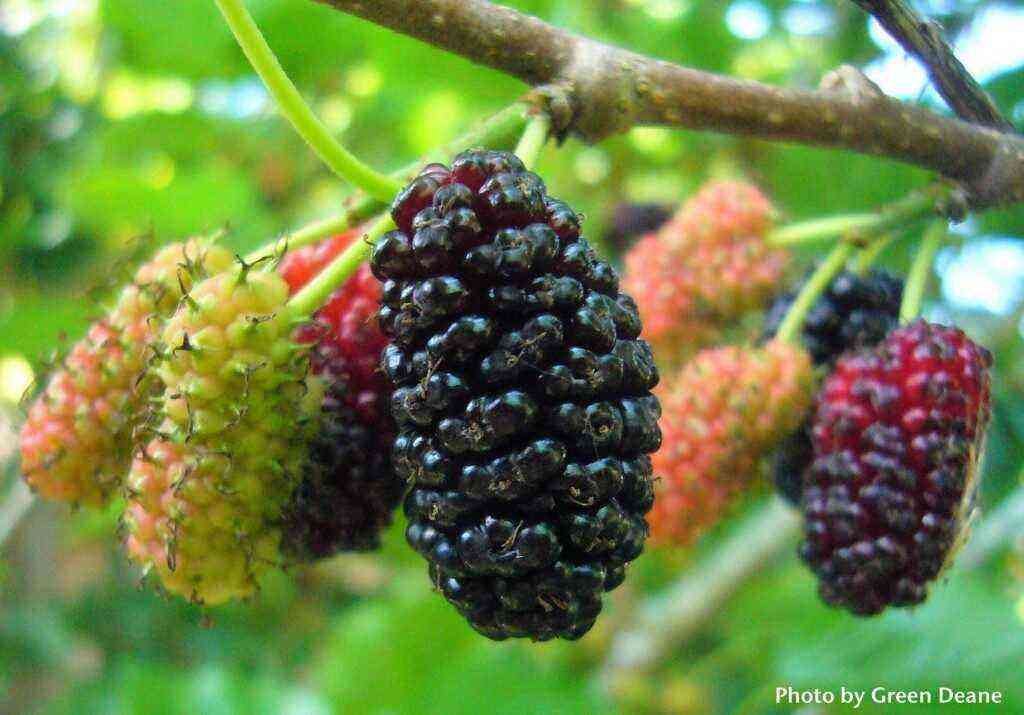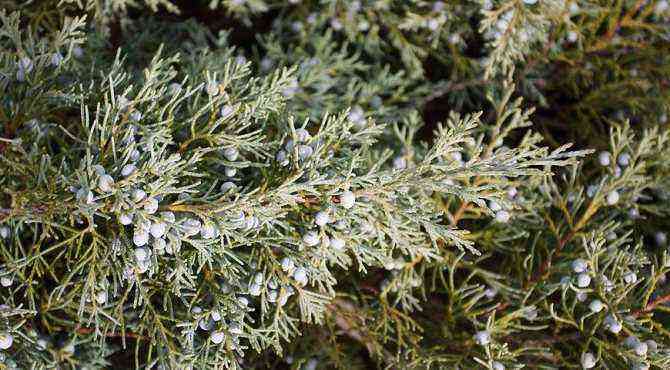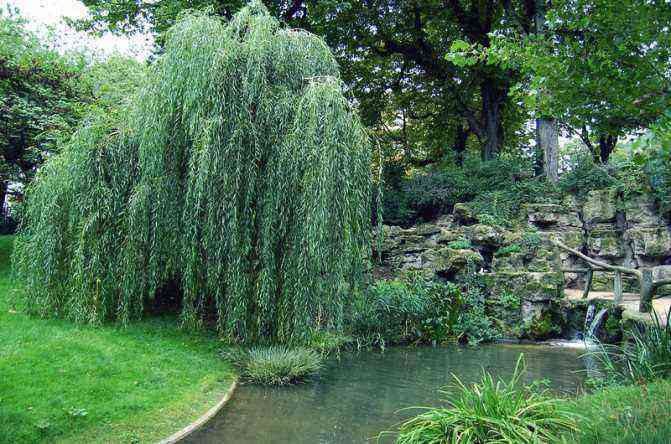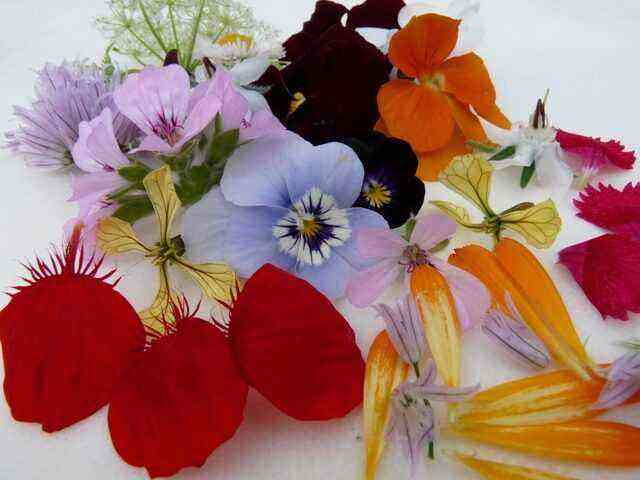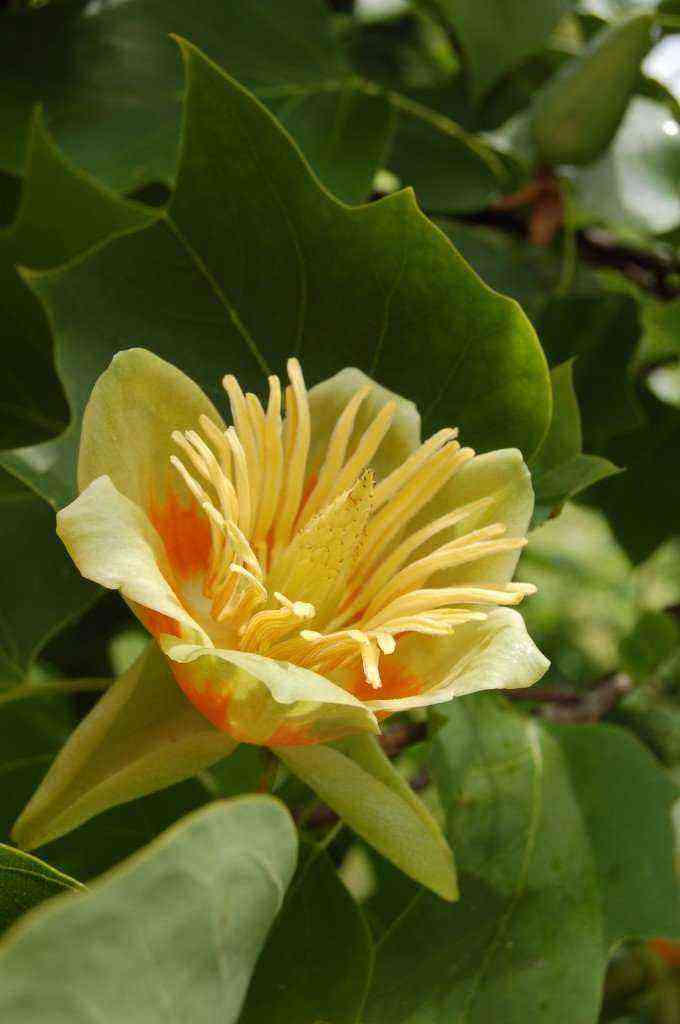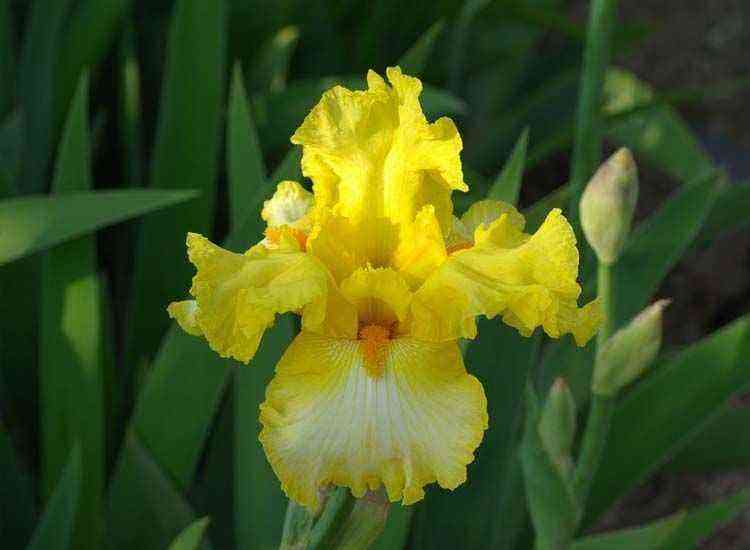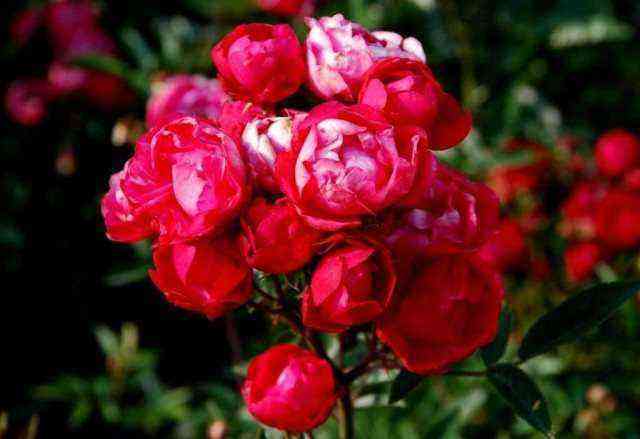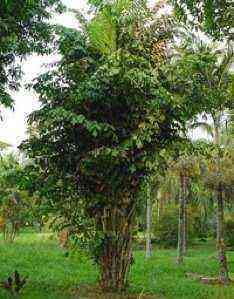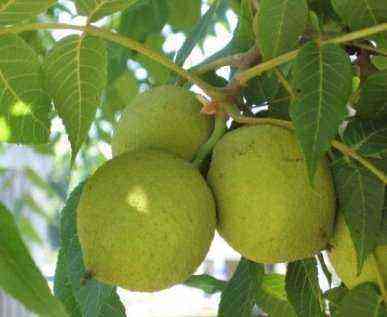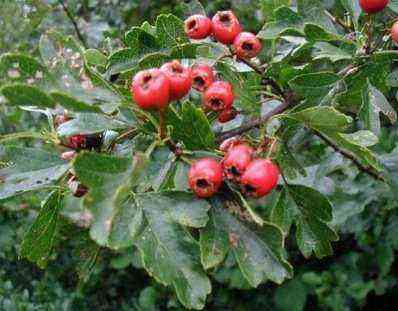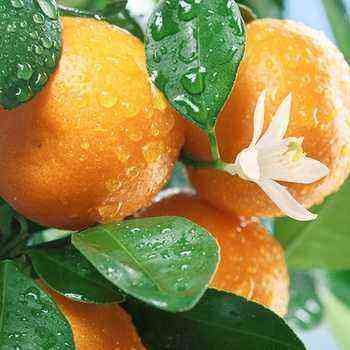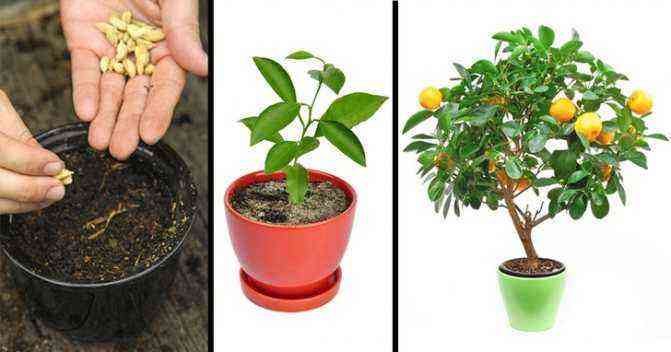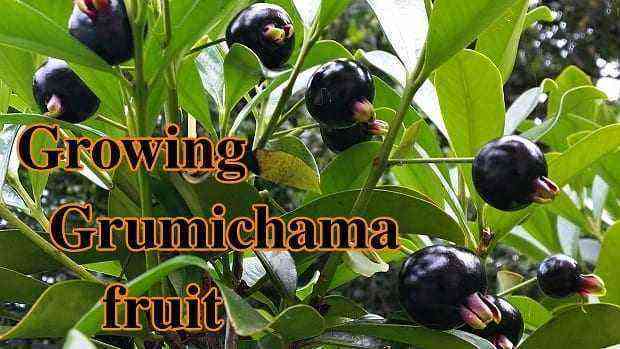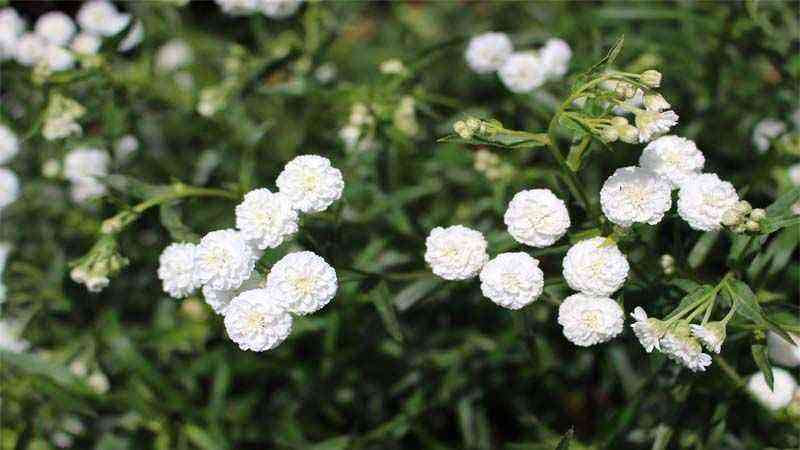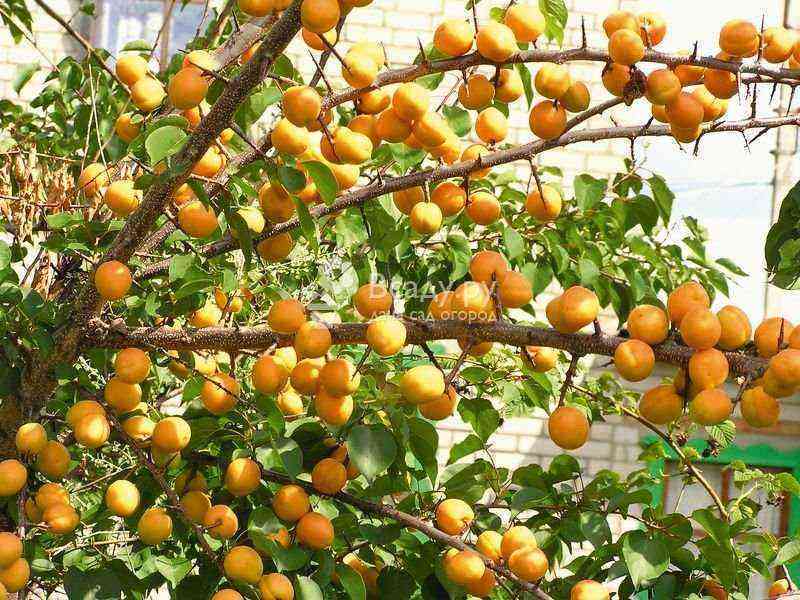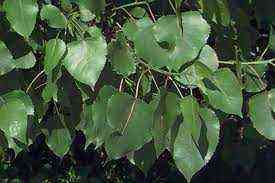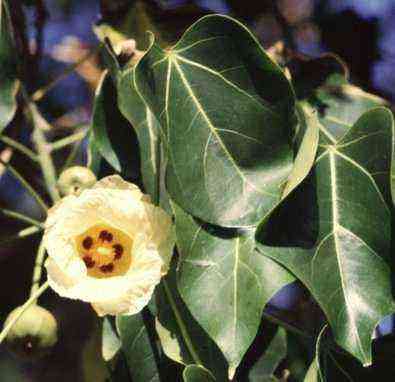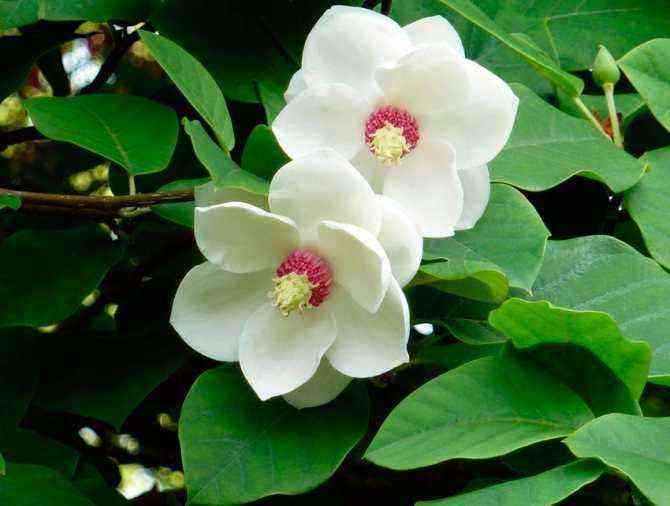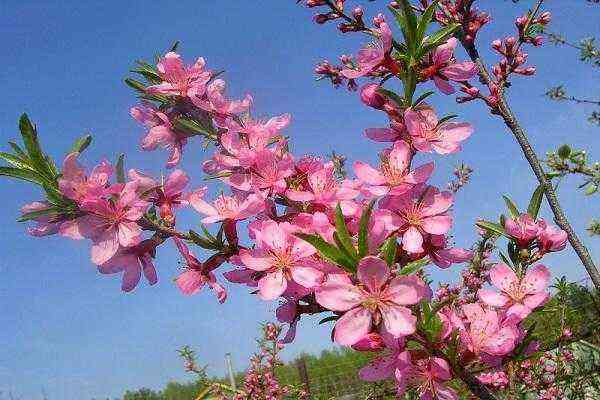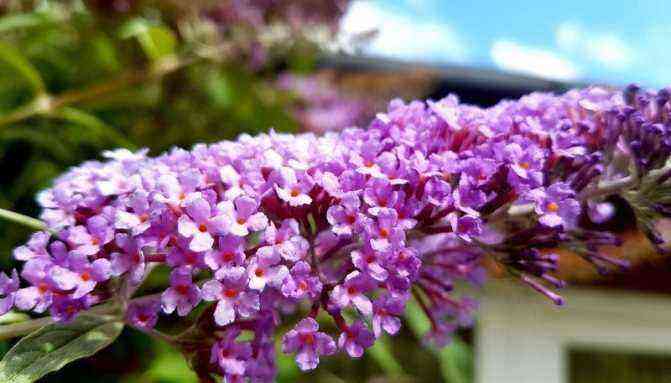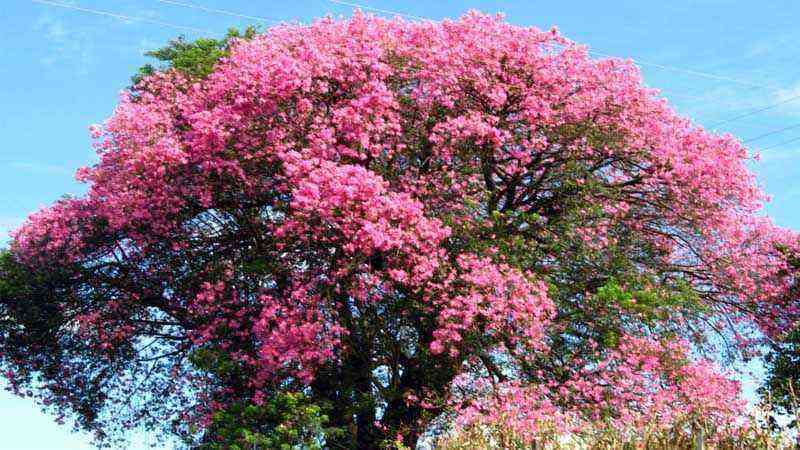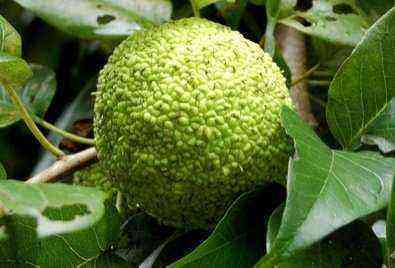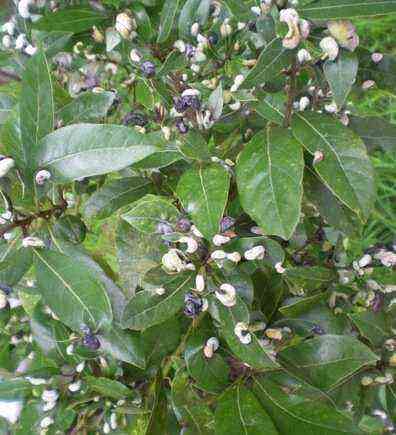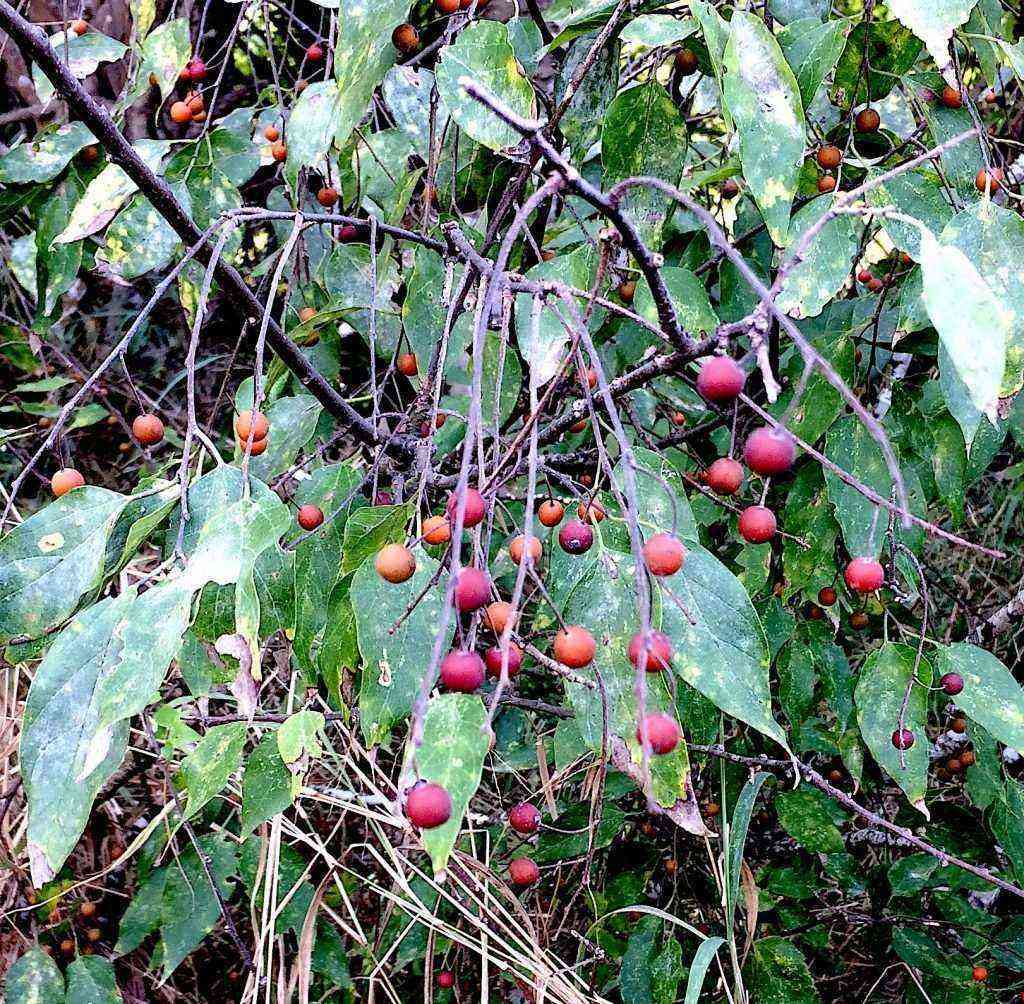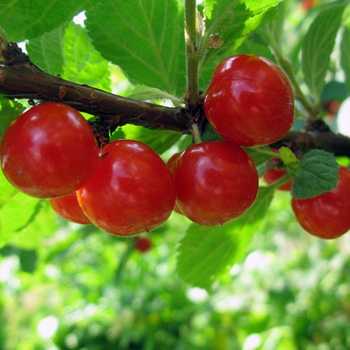
Family: Rosaceous.
Homeland – China, Japan, the Himalayas, the Far East.
What does a felt cherry shrub look like: flowering and leaves, sizes and photos of the bush
Felt cherry shrub can feel great in different regions of our country.
The homeland of the felt cherry is northern and western China. From there, more than a hundred years ago, it was brought to the Primorsky and Khabarovsk Territories, the Amur Region. Here it has shown good winter hardiness and adaptability to local conditions and has become widespread. The inhabitants of this region associate the concept of cherry with felt cherry, since the European common cherry there does not withstand the harsh frosty, snowless winters. Breeders have developed varieties of felt cherries: Ogonyok, Khabarovchanka, Pionerka, Amurka, Leto, Alisa, Okeanskaya, Chereshnevaya, Virovskaya, etc. They are distinguished by larger fruits, high yield, and good taste. However, the bulk of the bushes in the gardens of the Far East are unvaccinated seedlings. See what a felt cherry looks like when properly cared for.
Felt cherry was brought to the European part of the country from the Far East in the early twenties of this century. It was first described by I.V. Michurin called Ando. IV Michurin characterizes the felt cherry in the following way: “a completely new species of stone fruit, unprecedented in European gardens, is being introduced into culture. The yield is amazingly generous … The extremely bountiful harvests and the juiciness of the sweet fruit should draw the attention of gardeners to this new species, suitable for extensive cultivation. ” It has gained particular popularity here in recent decades, when a dangerous fungal disease – coccomycosis – killed many common cherry trees. Felt cherry is completely resistant to this disease.
The leaves of the felt cherry deserve attention, since it got its name because of their peculiar corrugation and pubescence.
Felt cherries are generally sweeter than regular cherries. The amount of sugars in them reaches 10%. Jam, juices, compotes are prepared from the fruits, and candied. They are very tasty fresh, straight from the bush. Children love them very much.
For amateur gardeners, it is also valuable because it does not give root growth at all and there is no need to fight it endlessly. Many gardeners take advantage of this property of felt cherries and use it as a stock for grafting their favorite varieties of ordinary cherries. It turns out an ordinary cherry, but does not give root growth.
Despite the similarity of felt cherry and common cherry in fruit, in fact, they are distant relatives. Scientists-fruit growers attribute the felt cherry to a special genus of micro-cherries, which are related much closer to plums, apricots and peaches than cherries. Therefore, sometimes felt cherries are used as a dwarf rootstock for plums, large-fruited cherry plums, apricots and peaches. Look at the photo of a felt cherry bush, which shows adult plants with proper crown formation:
Cherry felt (C. tomentosa) – decorative winter-hardy deciduous shrub 2 – 3 m high, with a spreading crown. Felt cherry sizes can vary depending on the variety chosen.
Annual shoots are heavily pubescent. The leaves are simple, obovate or oval, pointed, grayish-green above, pubescent, woolly below, brown-gray in color, up to 5 cm long. In autumn, the leaves turn yellow and turn red, becoming a decoration of the garden. Felt cherry blossoms are interesting, which can decorate any landscape design. Cherry flowers are white or slightly pink, up to 2,5 cm in diameter, collected in umbellate inflorescences. Blooms in May. Cherry fruits are drupes with a short stalk, bright red in color, up to 1,8 cm in diameter, the pulp is juicy, sour-sweet. In central Russia, the growing season begins in May, the fruits ripen in late July – early August.
B. felt winter-hardy, is distinguished by early maturity, high productivity and decorative effect.
When the felt cherry begins to bear fruit
Felt cherry is a long-lived culture: in one place it can bear fruit for up to 15-18 years. Many are worried about when the felt cherry begins to bear fruit after planting. This usually starts after 2 years.
V. felt looks great on the lawn, as well as in single and group plantings, it is interesting in curbs and hedges. The plant can also be used to anchor ravines. In spring, beautiful flowers, in autumn, bright red fruits and yellow-red leaves make cherries an indispensable plant in the garden. The fruits are high in vitamin C.
How to trim and shape a felt cherry (with video)
Cherries are in great need of regular pruning. The formation of the crown in a plant provides for uniform growth and development, regrowth and skeletal branches and prevents thickening of the crown. Before forming the felt cherry, you should leave a small stem (25 – 40 cm) and 3 – 5 skeletal branches, and with good development of the bush, it is best to leave 7 branches. When forming, all branches capable of thickening the crown are removed, and the skeletal branches are shortened so that the central conductor is 15-20 cm higher than the ends of all skeletal branches.
When pruning cherries, keep in mind that the main goal is to maintain good annual growth and a high level of lighting throughout the crown. Heavily thickened plants require the removal of several large branches. Watch how to trim a felt cherry in the video, which shows all the basic operations:
In addition, when pruning cherries, broken and rubbing branches are removed. By the age of 8 – 10, the cherry branches become bare, annual growths weaken and shorten, reaching no more than 15 – 20 cm instead of the prescribed 30 – 40 cm. Such bushes require rejuvenation. In this case, the shoots are shortened by 2 – 3-year-old wood.
Felt cherry bears fruit abundantly. The fruits sit on very short (3-5 mm) stalks and literally stick around the branches, like sea buckthorn. For better pollination in the garden, you need to plant 2-3 bushes. Variety differences are not important for full pollination. It quickly begins to bear fruit: already in the second or third year after planting, and by the age of 6–7, yields increase to 7–12 kg per bush. Therefore, you need to try to immediately form a correct and easy-care bush. It branches directly from the base of the stem, however, these shoots are removed to a height of 35-50 cm, leaving only the central one – they form a stem 30-50 cm high, and 6-7 branches are left at different heights, directed evenly in different directions, the extra ones are cut out. Felt cherry is prone to thickening of the bush, so every year in early spring the bush is lightened: branches that grow inside the bush are cut out, broken and growing very densely in one place. Thus, a beautiful, rounded bush is formed in 2-3 years. A well-formed bush is easy to care for and more productive.
The best varieties of felt cherries and their photos
The high and fairly stable yield is a great advantage of the felt cherry, which favorably distinguishes it from the ordinary cherry, whose trees often bloom profusely, but bear little fruit. The average yield per bush is 5-10 kg, the maximum is up to 20 kg of fruit. Like most other fruit crops, felt cherry is self-fertile, and for normal pollination it is necessary to plant 3-4 plants of different varieties, which will pollinate each other. The same requirement applies to unvaccinated plants grown from seeds.
Breeders are working on the development of large-fruited varieties of this valuable crop. To date, scientists have obtained more than two dozen large-fruited varieties. These are the best varieties of felt cherries: Alice, Vostochnaya, Detskaya, Krasavitsa, Ogonyok, Skazka, Kharkovchanka, Tsarevna, etc. All of them are large and sweet-fruited and are of great interest to amateur gardeners. Look further at the varieties of felt cherries in the photo, which illustrate brief characteristics:
Alice. The bush is of medium vigor, 1,5 m in height, oval, dense. The grafted seedlings bear fruit in the 2nd year, self-rooted in the 3-4th year. The longevity of plants is 17 years. The variety is self-fertile. Blooms in the second half of May. The fruits ripen in the second half of July at the same time. The color of the fruit is maroon, the flesh is red, dense, juicy. The fruits are universal: they are consumed fresh and processed into juice, jam, jam, marshmallow, marmalade, jam, wine, etc. The yield is high – 8,5 kg per bush.
The bush, annual and perennial branches are resistant to winter frosts, flowers – to spring frosts. The variety is drought-resistant, does not tolerate waterlogging. Resistant to coccomycosis, relatively resistant to clasterosporiosis. When waterlogged, flowers and fruits are affected by moniliosis.
Delight. The bush is medium-sized, 1,5 m in height, wide, dense. The grafted seedlings bear fruit in the 2nd year, self-rooted in the 3-4th year. The longevity of plants is 18 years. The variety is self-fertile. Blossoms in mid-May, fruits ripen in mid-July at the same time. The fruit is large, with an average weight of 3,2 g. The color of the skin is bright red, the flesh is red, fibrous, dense, juicy. The taste is sweet and sour. The economic purpose is universal: both fresh and canning.
Eastern. The bush is of medium vigor, 1,5 m in height, compact. The grafted seedlings bear fruit in the 2nd year, self-rooted in the 3-4th year. The longevity of plants is 17 years. The variety is self-fertile. Blooms in the second half of May. The fruits ripen in the second half of July at the same time. The fruit is large, the average weight is 3,3 g. The pulp is juicy, dense. The taste is sweet and sour. The economic purpose is universal: both fresh and processed. The yield is high – 8,7 kg per bush.
The bush, annual and perennial branches are resistant to winter frosts, flowers – to spring frosts. The variety is drought-resistant, does not tolerate waterlogging. Resistant to coccomycosis, relatively resistant to clasterosporiosis. When waterlogged, flowers and fruits are affected by moniliosis.
Children’s. Bush 1,8 m in height, broadly oval, medium thickening. The grafted seedlings bear fruit in the 2nd year, self-rooted in the 3-4th year. The longevity of plants is 18 years. The variety is self-fertile. Blooms in the second half of May. The fruits ripen in the second half of July at the same time. The fruit is large, the average weight is 3,5 g. The taste is sweet and sour. The economic purpose is universal: both fresh and for canning. The yield is high, 10 kg per bush.
The bush, annual and perennial branches are resistant to winter frosts, flowers – to spring frosts. The variety is drought-resistant, does not tolerate waterlogging. Resistant to coccomycosis, relatively resistant to clasterosporiosis. When waterlogged, flowers and fruits are affected by moniliosis.
Beauty. Bush up to 1,6 m in height, broadly oval, dense. The grafted seedlings bear fruit in the 2nd year, self-rooted in the 3-4th year. The longevity of plants is 17 years. The variety is self-fertile. Blooms in the second half of May. The fruits ripen at the end of July at the same time. The fruit is large, the average weight is 3,0 g. The economic purpose is universal: both fresh and processing. The pulp is juicy, dense, the taste is sweet and sour. The yield is high – 10,7 kg per bush.
The bush, annual and perennial branches are resistant to winter and spring frosts. The variety is drought-resistant, does not tolerate waterlogging. Resistant to coccomycosis, relatively resistant to clasterosporiosis. When waterlogged, flowers and fruits are affected by moniliosis.
Natalie. Vigorous bush, 1,8 m in height, broadly oval, medium thickening. The grafted seedlings bear fruit in the 2nd year, self-rooted in the 3-4th year. The longevity of plants is 18 years. The variety is self-fertile. Blooms in the second half of May. The fruits ripen in mid-July at the same time. The fruit is large, the average weight is 4,0 g. The color of the fruit is dark red, the flesh is red, dense, juicy, the taste is sweet and sour. The economic purpose is universal: both fresh and processed. The yield is high – 9 kg per bush.
The bush, annual and perennial branches are resistant to winter frosts, flowers – to spring frosts. The variety is drought-resistant, does not tolerate waterlogging. Resistant to coccomycosis, relatively resistant to clasterosporiosis. When waterlogged, flowers and fruits are affected by moniliosis.
The fire. The bush is of medium height, round, rather compact. The life of the bush is 14 years. It blooms in the second half of May, the fruits ripen in the second half of July. The fruits are large, with an average weight of 2,5 g. The pulp is rather thick, red, and has a sweetish-sour taste. The fruits are good for fresh consumption and for making juice, jam, wine.
The winter hardiness of the bush is satisfactory. Fruit buds are preserved, do not freeze. The variety is relatively drought-resistant. During the period of a sharp lack of moisture, the fruit ovary does not lose and the fruit does not noticeably shrink. The variety is relatively resistant to clasterosporium disease. Damaged by aphids and moths.
Oceanic virovskaya. Vigorous bush, 1,8 m in height, compact, medium thickening. The grafted seedlings bear fruit in the 2nd year, self-rooted in the 3-4th year. The longevity of plants is 17 years. The variety is self-fertile. It blooms in the second half of May, the fruits ripen in the second half of July at the same time. Average fruit weight 3,0 g The pulp is red, dense, juicy, slightly aromatic, sweet and sour taste. The economic purpose is universal: both fresh and processed. The yield is high – 9 kg per bush.
The bush, annual and perennial branches are resistant to winter frosts, flowers – to spring frosts. The variety is drought-resistant, does not tolerate waterlogging. Resistant to coccomycosis, relatively resistant to clasterosporiosis. When waterlogged, flowers and fruits are affected by moniliosis.
Pink fruitful. The bush is medium, spreading. Fruiting begins in the 2nd year of life of the growth of the scion. The fruits ripen in the second half of July, large, with an average weight of 3 g. The pulp is pink and dense, with a sweet-sour taste. Suitable for fresh consumption and for processing. Productivity up to 9,5 kg.
The variety is immune to cherry pockets. Winter hardiness is satisfactory.
Fairy tale. Bush 1,3 m in height, oval, medium thickening. The grafted seedlings bear fruit in the 2nd year, self-rooted in the 3-4th year. The longevity of plants is 17 years. The variety is self-fertile. It blooms in the second half of May, the fruits ripen in mid-July at the same time. The fruits are large, with an average weight of 3,3 g. The color of the fruit is maroon, the flesh is red, dense, juicy. The economic purpose is universal: both fresh and processing. The yield is high – 10 kg per bush.
The bush, annual and perennial branches are resistant to winter and spring frosts. The variety is drought-resistant, does not tolerate waterlogging. Resistant to coccomycosis, relatively resistant to clasterosporiosis. When waterlogged, flowers and fruits are affected by moniliosis.
The dark-haired oriental. The bush is undersized, 1,2 m in height, broadly spreading, dense. The grafted seedlings bear fruit in the 2nd year, self-rooted in the 3-4th year. The longevity of plants is 18 years. The variety is self-fertile. It blooms in mid-May, the fruits ripen in the second half of July. Average yield – 7 kg per adult bush. The average fruit weight is 2,5 g, the flesh is red, tender, juicy. The economic purpose is universal.
The variety is winter-hardy. In especially harsh winters, annual shoots are subjected to winter drying. Flower buds are winter-hardy. The variety is drought-resistant, does not tolerate waterlogging. Resistant to coccomycosis, relatively resistant to clasterosporiosis. In the rainy period, it is exposed to moniliosis.
Princess. The bush is undersized, 1,2 m, broadly oval, medium thickening. The grafted seedlings bear fruit in the 2nd year, self-rooted in the 3-4th year. The longevity of plants is 17 years. The variety is self-fertile. Blossoms in mid-May, fruits ripen in the second half of July at the same time. The fruits are large, with an average weight of 3,6 g. The pulp is light red, dense, juicy. The economic purpose is universal. The yield is high – 9,5 kg per bush.
The bush, annual and perennial branches are resistant to winter and spring frosts. The variety is drought-resistant, does not tolerate waterlogging. Resistant to coccomycosis, relatively resistant to clasterosporiosis. When waterlogged, flowers and fruits are affected by moniliosis.
Anniversary. Vigorous bush, 1,7 m in height, oval, medium thickening. The grafted seedlings bear fruit in the 2nd year, self-rooted in the 3-4th year. The longevity of plants is 16-18 years. The variety is self-fertile. It blooms in late May, ripens in the second half of July. The fruits are large, the average weight is 3,5 g, the flesh is red, juicy. The economic purpose is universal. The yield is high – 9 kg per bush.
Buds are resistant to winter frost, flowers – to spring frosts. The variety is drought-resistant, does not tolerate waterlogging.
Altana. Resistant to fungal diseases. Fruits are small, 2 g, rounded, dark red. Contains: dry matter 13%, sugar 9%, acid 1%, vitamin C 12,8 mg%. The pulp is red, tender, juicy, sour-sweet. Tasting score 5 points. Productivity 7 kg per tree. A bush with a dense spherical crown. Begins fruiting in the 4th year.
White. Winter-hardy, relatively resistant to clasterosporia and moniliosis. Fruits are medium in size, weighing 1,6 g, broadly oval, white. The skin is of medium coarseness, the pubescence is weak, tomentose. The pulp is white, juicy, fibrous. Colorless juice, sweet-sour taste, pleasant. Tasting score 3,6 points. The stone is not separated from the pulp, oval-wide, smooth. The fruits contain: dry matter 12,0%, sugar 7,6%, acid 0,8%, vitamin C 22,5 mg%. Average yield is 106,3 c / ha.
Favorite. The variety is winter hardy. Relatively resistant to clasterosporium disease. Fruits are large, with an average weight of 3,3 g, broadly round, dark pink. Semi-dry separation of fruits. The skin is medium-rough, medium pubescent. The pulp is pink, cartilaginous. The taste is sweet and sour, pleasant, harmonious. Tasting score 4 points. The stone is medium, broadly round, smooth, does not separate from the pulp. The fruits contain: dry matter 14,6%, sugar 8,16%, acid 0,74%, vitamin C 37,4 mg%. The average yield is 143,7 c / ha.
Felt cherry: growing and care
Felt cherry, when grown and maintained, does not tolerate shading, while it is necessary to protect plants from winter cold winds.
It develops a superficial root system located in a layer of 10–30 cm, which absolutely does not tolerate excessive moisture and can dry out.
For planting felt cherries, you need a site with light fertile soils, low standing groundwater, under no circumstances flooded, provided with good drainage and runoff of melt water. In areas with winter thaws, it is necessary to plant plants in the beds, to break through grooves in order to ensure the flow of water from the base of the trunk. You should not try to grow it in heavy clay soils and cold peat bogs. When planting, if the soils are viscous, clayey, sand should be added to the planting pit simultaneously with fertilizers and humus in a one-to-one ratio. If possible, expanded clay should be added to the prepared soil mixture. This will prevent the root collar from early spring mating.
Planting, caring for and feeding felt cherries: at what distance to plant (with video)
In the middle lane, the best time for planting micro cherries is early spring (April – early May), when the soil warms up well, but before the buds begin to bloom. Soil preparation and planting are not much different from those of ordinary cherries, only planting pits can be made smaller – 45 cm deep, 50 cm in diameter.At what distance to plant felt cherries depends on the goals of planting. Micro cherries can be planted in compacted rows – 1–2 m apart. For good inter-pollination, seedlings of various shapes or varieties are alternately placed on the site.
Top dressing of felt cherries: in the 2-3rd year, plants are fertilized in spring with urea – 20 g per 1 sq. m of the trunk circle. Then, as they enter fruiting, 20-30 g of urea, 15 g of superphosphate and 20 g of potassium sulfate per 1 sq. m of the trunk circle. Nitrogen fertilizers are applied only in early spring, superphosphate, potash fertilizers and lime – in the fall. Every year they cut out dry and broken branches, shorten the frozen ones to healthy tissue, try to thin out the center of the bush for better illumination. Slices after pruning are carefully treated with garden putty. Watch the planting and caring for felt cherries in the video, which shows everything a novice gardener needs to know:
How to care for felt cherries in the garden: how to cover for the winter (with photo)
Let’s continue with the story of how to care for felt cherries in order to get guaranteed high yields. It is safer for trees to hibernate under a snow cover, therefore, snow retention measures should be taken in winters with little snow. In severe winters, it is useful to provide for an easy shelter of the branches, for which they are tied with burlap or film and twine. Before covering the felt cherry for the winter, you need to carefully examine the plants and remove all diseased parts.
Felt cherry usually blooms in early May, still in a leafless state. At this time, she is amazingly beautiful. Therefore, it can be grown in the garden not only as a fruit crop, but also as a decorative one. During its flowering, frosts occur, so gardeners help cherries (not only felt, but also other varieties) to somewhat delay the start of flowering. To do this, before the snow melts under the bushes, the cherries are collected and trampled down well, and from above they mulch with straw or sawdust. In this case, under the cherry bushes, the soil remains frozen for a long time, the roots begin to feed the plant later. And, as a rule, the bush later wakes up from hibernation and blooms after the frost has passed.
If there is a lot of snow in the garden in winter, the bark of the cherry trunk at the root collar under a thick cover of snow can rival. Therefore, in late February – early March, when the snow begins to settle under the influence of the bright sun, the trunk must be dug up and freed from the snow to the ground. The following shows a felt cherry in the photo in the garden, where all agrotechnical measures were taken in a timely manner:
How to propagate and grow felt cherries from the stone (seeds): how and when to plant
Before propagating the felt cherry, you need to find out about the available methods for this process:
- seeds, sowing them in the summer immediately after ripening, in autumn or spring (when sowing in spring, seeds require a preliminary 3-month stratification in wet sand);
- inoculation (compatible with cherry plum, plum, peach, apricot);
- layering;
- green and lignified cuttings that root relatively well.
The main breeding method for felt cherries is sowing seeds. Felt cherry from seeds fully retains the properties of the parent plant. Before growing felt cherries from seeds, they are harvested from the bushes of the best in yield and fruit quality, washed and slightly dried in the shade. At the end of August, the seeds are mixed with wet sand and stored in a cool room until sowing. In October, seeds are sown on the garden bed in grooves 3-4 cm deep. Amicable shoots appear the next year in spring. With good care, seedlings grow quickly and reach 40-50 cm in height in the first year. In the fall or spring of next year, they are seated in a permanent place. Fruiting occurs in the 3-4th year. If there is a desire to accelerate the beginning of fruiting by a year, sow seeds in the fall immediately to a permanent place, 4–5 seeds each in a hole prepared for planting a seedling at a distance of 15–20 cm from each other. After a year, the best plant is chosen, and the rest are removed. Without a transplant, the bush will develop much faster and begin bearing fruit a year earlier. It is important to know how and when to plant felt cherry seeds, strictly follow the recommendations above.
When sowing seeds, unfortunately, all the positive properties of the parent variety are not completely preserved, therefore, if you want to preserve or propagate the plant you like, you will have to resort to budding (it is done in the same way as for ordinary cherries). Do it in August on annual seedlings.
Seeds can be sown in spring, but then stratification is required in winter for 90-100 days. For spring sowing, seeds are stratified in calcined sand or sawdust. The seeds are mixed in the ratio: one part of the seeds (seeds), three to five parts of one of the components. The mixture is moistened so that water does not drain, and when compressed into a lump, it does not crumble. The mixture is placed in a half-liter jar and placed in a refrigerator or any other place with a temperature of 0 … + 5 degrees. 1-2 times a month check the moisture content of the mixture, if it is dry, add water and mix so that the stratification of all seeds is uniform. If the seeds hatch before the sowing time, then the jar is transferred to a cooler place. You can also sow the hatched seeds in a seedling box, and plant them in a garden in the spring. In this case, the young seedling has some leap in growth and development. It is planted in the garden after passing the frost.
You can plant 1-2-year-old seedlings as follows. In a planting hole or trench at least 60 cm wide and no more than 50 cm deep, you need to add a soil mixture (per 1 sq. M): organic fertilizers at least 3 buckets, lime – 400-800 g, phosphorus – 40-60, potassium – 20-30 g of active ingredient. Mix everything evenly. The root system must be cut by 20-25 cm, treated with a clay mash, and the bushes must be planted at the same depth as in the nursery. After planting, the soil is compacted, watered abundantly and mulched with peat or organic fertilizers.
It is enough to plant 2-3 felt cherry plants on the plot. Compared with ordinary cherries, a more rarefied planting scheme is used: 3–3,5 × 1–1,5 m. It is carried out with 1–2-year-old seedlings to the same depth at which they grew before.
Caring for young bushes consists of thinning the crown and removing broken branches. When the annual growth begins to fade, it is necessary to carry out anti-aging pruning, removing the top of the branches until the last strong growth.
Felt cherry trees can withstand frosts down to –40 ° С. Flower buds are more sensitive to cold weather and in the European part of Russia freeze under very harsh winters with temperature fluctuations from thaws to severe frosts below –30 ° С.
For a long time, felt cherry in the conditions of the European part was practically not affected by diseases and pests. However, in recent years, in the orchards of the middle zone, there has been an outbreak of a new dangerous fungal disease of stone fruit crops – monilial burn, from which felt cherry also suffers greatly. This disease manifests itself at the beginning of summer, when the leaves suddenly wither and dry on individual shoots. With mass development, the bush looks like it was burnt by fire, which is why the disease is called monilial burn. To combat this disease, it is necessary to cut them out immediately after the shoots dry up with the capture of the upper part of healthy wood. In autumn, after leaf fall and in spring, before bud break, it is necessary to carry out an eradication spraying with 2% nitrophene. Before flowering and a week after the end of flowering, especially if it fell on rainy damp weather, you should spray the felt cherry bushes with 0,7% zineb.
Gradually, felt cherry begins to be affected by other diseases typical of cherries and plums.
Selection of seedlings
For good fruiting on the site, it is necessary to have at least two felt cherry plants (for mutual pollination), since it does not cross with ordinary cherry varieties.
Felt micro cherry seedlings are branched one- or two-year-old self-rooted plants.
For annual seedlings of the first grade, the stem height should be at least 90 cm, the stem diameter should be at least 11 mm (for the second grade, 80 cm and 10 mm, respectively).
In biennial plants, the height of the first grade stem should be at least 40-60 cm, the stem diameter at least 1,8 cm, the length of the main lateral branches at least 30 cm (for the second grade, the height is 40-60 cm, the stem diameter is 1,6 cm, the length of the main lateral branches is 30 cm).
Nutritional value of felt cherry fruits
Felt cherries contain a large amount of sugars, mainly glucose and fructose, organic acids – malic and citric, are rich in vitamin C, and also contain pectins and tannins.
Cherry fruits deteriorate quickly, so they are harvested and immediately consumed and processed and consumed fresh and processed. At home, they are dried, used to make jam, compotes, juice, syrup, jam, fruit drink, tincture. The leaves are added to pickles and marinades.
Found that felt cherry improves appetite, regulates intestinal activity, promotes better absorption of fats and proteins. It has capillary-strengthening properties, and linoleic acid in the fatty oil of the bones is capable of having an anti-sclerotic effect.
Felt cherry contains iron, copper, cobalt, which makes it suitable for treating anemia. Pectin substances contribute to the removal of nitrogenous toxins from the body.




